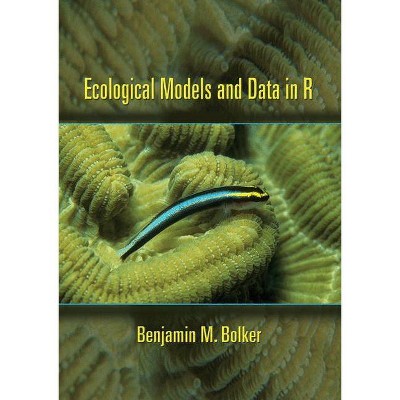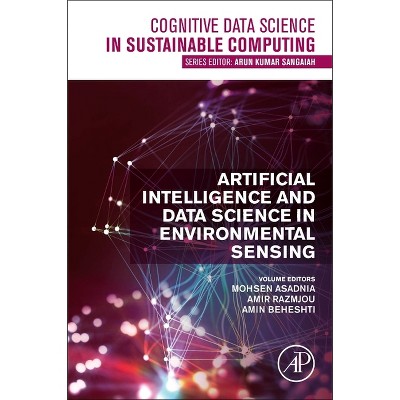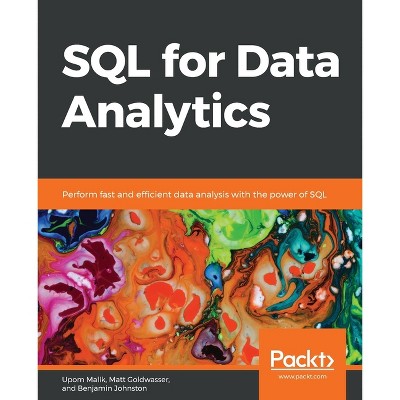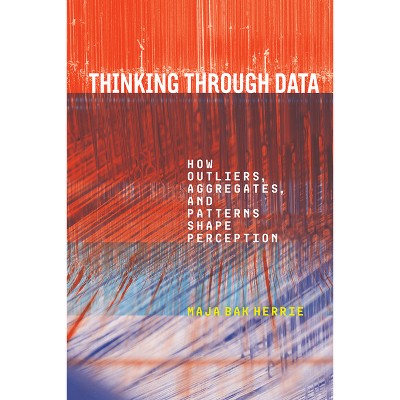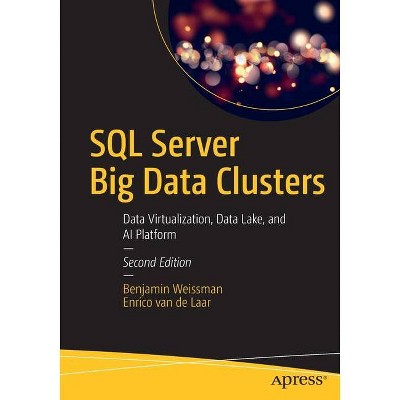Remote Sensing and GIS for Ecologists - (Data in the Wild) by Martin Wegmann & Benjamin Leutner & Stefan Dech (Paperback)

About this item
Highlights
- This book will allow ecologists to get started with the application of remote sensing and to understand its potential and limitations.
- About the Author: Martin Wegmann has a PhD in remote sensing focusing on time-series analysis on land cover change and fragmentation in Africa.
- 324 Pages
- Science, Life Sciences
- Series Name: Data in the Wild
Description
About the Book
This book will allow ecologists to get started with the application of remote sensing and to understand its potential and limitations. Using practical examples, the book covers all necessary steps from planning field campaigns to deriving ecologically relevant information through remote sensing and modelling of species distributions.Book Synopsis
This book will allow ecologists to get started with the application of remote sensing and to understand its potential and limitations. Using practical examples, the book covers all necessary steps from planning field campaigns to deriving ecologically relevant information through remote sensing and modelling of species distributions.
Review Quotes
Remote Sensing and GIS for Ecologists could become an essential undergraduate-level textbook, but it is also a guide to practising ecologists who want to broaden their toolkit.
Satellite remote sensing and GIS were once the preserves of a small number of well-financed groups, but the field has been democratised by open-source software. QGIS and R are covered by this textbook aimed at a practitioners who want to know how to obtain, process and analyse remotely sensed data. It provides excellent guidance on designing studies and recognising both the potential and limitations of remotely sensed data. Later chapters cover common ecological applications, including distribution modelling and land cover pattern analysis. The book is printed in high quality with numerous colour figures. It would make an excellent companion to a workshop.
The book has a clearly stated aim: "to make remote sensing data and tools more accessible to ecologists". The structure follows a logical and straightforward outline, which not only gives a comprehensive overview on the applications of remote sensing in ecology, but it proposes also an organized workflow useful not only for newcomers of RS & GIS. Each chapter adds a step in a realistic sequence often demanded by real case studies.
I tested some of the proposed procedures with my collaborators and we found them quite effective and easily applicable in practice. We can then state that the authors met the declared aim.
We appreciated the choice of open source software (OSS) declared in the book's subtitle. Basing the methodology on open source tools such as QGIS and R is a great advantage and it is coherent with the current era of free Earth Observation data. This gives the opportunity to approach ecological analyses at no cost avoiding the frustration of expensive commercial licenses that may quickly expire. Furthermore, the specific choice of QGIS and R as reference tools is justified by large and active communities, which can promptly assist users (especially newbies) on online forums, a great resource in alternative to usual help pages.
In particular, the detailed and straightforward introduction to the R raster and remote sensing toolbox (RStoolbox) can be of great help. RStoolbox although with great capabilities and supported by a nice graphical potential, has a steep learning curve (as R in general) and was lacking of an easy introduction material with concrete examples. Therefore, readers that reach the end of the book following the exercises proposed will overcome most of the problems encountered in the learning phase of script writing. Moreover, many script samples are given directly on the book and more complex ones can be accessed online. This allows the creation of a nice library of example scripts that can be easily adapted to case to case analysis.
One of the great advantages of using R and its scripts is the transparency and reproducibility of algorithms. This is the case for the examples provided for classification of land cover, for analysis of time series and land cover patterns and for species distribution modelling.
Many tips and tricks are taught in the exercise proposed. They are useful to understand how the software work and how to be efficient while working with them. This is important especially when working with a large amount of raster in R or simply on a wide area of interest, such as for time series or land cover patterns analysis, which could require an amount of RAM memory or even disk space, exceeding the ones available. The methodologies explained help to save computational resources, disk space and increase efficiency in terms of time.
We recommend this book not only as an interesting and informative guide to remote sensing concepts, but also as a vehicle to quickly delve into hands-on processing and analysis of remote sensing data to answer many questions relevant to landscape ecologists.
About the Author
Martin Wegmann has a PhD in remote sensing focusing on time-series analysis on land cover change and fragmentation in Africa. He is an assistant professor at the Global Change Ecology Msc program at the University of Würzburg, Germany and runs courses in remote sensing analysis for biodiversity and conservation.
Benjamin Leutner is a research assistant at the department of remote sensing at the University of Würzburg. He has extensive experience in geo-spatial analysis of remote sensing data using Open Source software.
Stefan Dech is director of the German Remote Sensing Data Center (DFD) since 1998, and current spokesman of the Earth Observation Center (EOC) at the German Aerospace Center (DLR). Since 2001 he has held the Chair for Remote Sensing at the Institute of Geography and Geology of the University of Würzburg.
